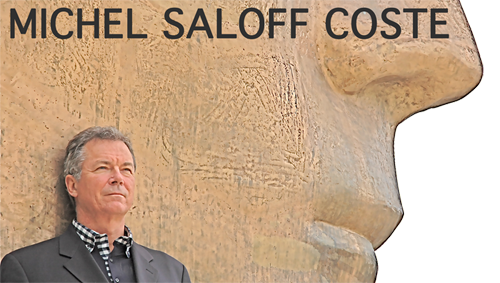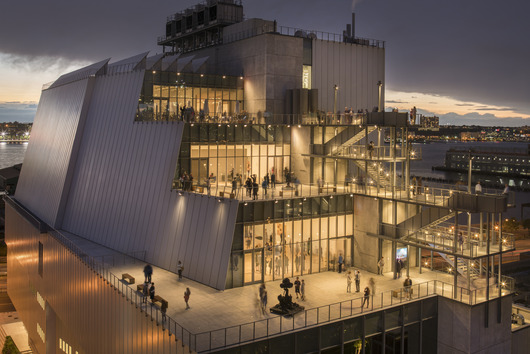Un fait anatomique avec des conséquences émotionnelles
Qu’est-ce que la mémoire du futur ? C’est la mémoire qui nous projette dans l’avenir. Cette mémoire prospective a la particularité d’avoir besoin d’informations acquises dans le passé ou le présent – ce qui revient au même – afin qui nous puissions imaginer des hypothèses sur les futurs probables. Or, depuis de nombreuses années, le futur s’est contenté de progrès incrémentaux. La plupart d’entre nous n’a pas été formée à cet exercice dans un contexte de ruptures. Aujourd’hui, elles sont partout, ruptures économiques, technologiques, culturelles… Une nouvelle vigilance est de mise si nous ne voulons pas que nos émotions nous bouchent l’horizon.
Notre cerveau s’est modelé dans le passé, au fil de nos apprentissages. Autodidacte par nature, il sait évoluer tout seul, que nous le voulions ou non. Les neurones se mettent en liens et apprennent à s’activer automatiquement, créant de solides routines cognitives. Les apprentissages se font en associant connaissance et contexte, reconnaître sa boulangère dans le métro est beaucoup moins facile que dans la boulangerie ! Lors des périodes de fortes mutations – environnementales – technologiques – collaboratives accompagnées de leur cortège d’instabilités économiques et sociales, chaque personne va vivre des émotions en références « à ce qu’elle a en elle » et à la façon dont elle perçoit le contexte. La limite de ses connaissances la rend vulnérable aux manipulations de ceux qui ont intérêt à jouer sur ses peurs afin d’acquérir du pouvoir.
Une mémoire prospective plus ou moins « musclée »
Nous avons tous une mémoire du futur. Elle peut être béquillée par un agenda, savoir ce que je fais demain, la semaine prochaine, etc. Elle est à l’œuvre quand nous achetons une maison – toute faite pour ceux qui ne sont pas sûrs des talents de leur imagination, à partir des plans d’un promoteur pour ceux qui ont plus d’expérience, avec un architecte pour les imaginatifs intrépides, capables de se voir vivre dans un espace qui n’existe pas encore. Chaque personne dans le feu de l’action est soumise à ses routines cognitives, c’est grâce à cela qu’elle peut réagir au quart de tour. Mais c’est aussi à cause d’elles qu’elle peut manquer d’imagination. Lorsque nous voulons changer de cap, stimuler l’innovation, inventer de nouveaux modèles, il faut « nourrir » notre cerveau d’éléments afin de pouvoir élaborer une vision, une intention qui ait du sens dans le contexte en évolution. La mémoire du futur devient stratégique.
Innover, transformer, demande de savoir douter, mais également de l’ouverture perceptive et de la sécurité émotionnelle
Dans la vie professionnelle, l’expert utilise sa mémoire pour faire des prédictions de résultats. A partir de la problématique « si, alors », il opère un rappel mnésique des différentes situations rencontrées afin de faire des hypothèses. Au cours de leurs travaux de recherches, CHABRIS & SIMONS démontrent que les experts savent, mieux que les non experts, douter de leurs hypothèses. Les béotiens sont souvent très sûrs d’eux. Le paradoxe qui apparait dans ces études étant que moins l’on sait, plus l’on croit savoir. Les experts d’un domaine savent qu’ils peuvent se tromper, car ils savent que leur compétence est évolutive, ils ont appris à mettre en lien de nouvelles informations avec leurs connaissances intégrées. Dans les contextes changeants, l’impression de savoir est une illusion qui peut coûter cher. Un travail d’ouverture des perceptions, avant de se projeter dans le futur, est une nécessité cognitive et émotionnelle. Car celui qui n’a pas de vision a le choix entre le déni de son ignorance, ou la peur et la colère en réaction aux difficultés qu’il n’aura pas anticipées. Aujourd’hui les ruptures de toutes natures confrontent ceux qui n’ont pas compris les nombreuses perturbations émotionnelles improductives que vit le sujet sans perspectives. Si j’envisage le futur à partir d’un point de vue égocentré, empêtré dans les reliquats du passé, sans mouvement évolutif, je risque de ne vivre que des pertes. Alors, la nostalgie prend le pouvoir sur l’intelligence.
Le paradoxe de l’ère de l’information
Le paradoxe de notre époque est qu’il n’y a jamais eu autant d’informations disponibles alors que nous avons à redécouvrir notre ignorance. Ignorance du fonctionnement de notre cerveau, des avancées technologiques, des nouvelles technologies… des découvertes de toute nature qui vont transformer nos sociétés. Pour que l’information soit utile à la vision, il faut un travail d’appropriation et de mise en perspective. L’illusion d’avoir la connaissance sans effort par un accès facile à l’information est un leurre dangereux. Nous sommes issus d’une époque de survalorisation des savoirs acquis de façon académique, nous entrons dans celle de l’ouverture à la découverte de ce que nous ne savons pas. Les neurosciences en premier lieu en attestent l’étendue. Alors, au moins dans les entreprises, transformons-nous en explorateurs afin de mettre au jour de nouveaux territoires et aidons chaque collaborateur à construire sa mémoire du futur de façon dynamique et mobilisatrice.








